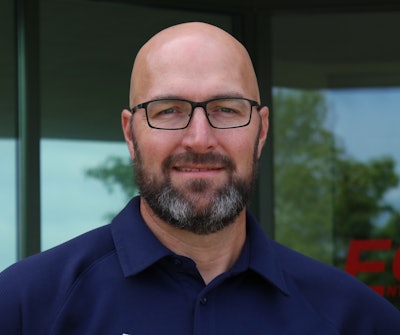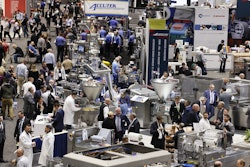Nolan Wolkow, president of CPG and co-man/co-pack EnterpriseCP, featured for its new equipment in a previous issue of Packaging World, describes how his company has adjusted to the new, ‘post-pandemic’ workforce.
Packaging World:
When we last spoke, you mentioned that at the beginning of the pandemic, you had plenty of workers, but then during and after, your labor force was smaller. What drove that change?
Nolan Wolkow:
As we look at the time during the pandemic, there was a shift in the worker’s thought process. The main thing we saw was that there wasn’t a desire to go back to work right away. There were a lot of incentives from the government to actually stay out of work, which made it difficult because the wage factors had not caught up to those benefits. And so we had to raise wages, as did a lot of the companies we compete with for labor. Once people started coming back to work, it was a very competitive market, and it wasn’t as easy to find employees.
Are you finding it more challenging to find skilled labor or unskilled employees?
We have really focused on technology and on finding ways to increase production without adding a lot of headcount. So the labor force we’re desiring is a more technical, more skilled workforce. That makes finding employees more difficult too. Even today, the areas we struggle with are in mechanical roles—so maintenance, engineering, more of the technical operators who understand how to run and adjust and skillfully operate equipment.
We still can find individuals for more of the general labor roles; it’s the skilled labor that’s a challenge, and the reason for that is twofold. First, everybody’s looking for skilled labor, so there is a competitive aspect to finding that labor, and second, there aren’t a lot of people going into the manufacturing industry anymore. We’ve seen more of the younger generations gravitate toward work-from-home jobs with a flexible schedule. And so you don’t see as many individuals, the newer high school graduates, looking at manufacturing as where they want to go.
Do you see other changes in the new workforce that you’ve had to adjust to?
There are a lot of individuals who want to work Monday through Friday—they do not want to work on the weekend. And there’s enough available work out there for them that if they look around, they can find jobs that will be Monday through Friday.
One of the roadblocks we run into in manufacturing is you typically run around the clock. At my previous job with SunOpta, we ran 24 hours a day, seven days a week, 365 days a year. For someone coming out of high school, a lot of the highly desirable jobs start on the back shift [late afternoon through midnight]; they don’t start Monday through Friday, 8 to 5. And so, getting someone to say, “Yeah, I’m willing to work that back shift,” has been a harder sell than probably the job itself, because you can’t have 12 people in a maintenance group on days and none on nights. You have to build positions that you need to be successful, which includes back shifts.
What strategies have you used to address these challenges?
One of the things we’ve focused on is how can we be competitive and still be family-friendly from a work schedule standpoint. So a lot of the decisions that we’ve made in the last six months to a year have really been focused around how do we stay on a four-day schedule, flexing to five, staying away from Saturday and Sunday—that’s family time—while at the same time being able to complete our production cycles and take on new growth over the course of the next one to five years.
We’ve done that with technology, through bigger, faster, more automated equipment that requires fewer people and that can increase our production 30%, 40%, 50%, without having to add a Saturday workday or a weekend shift. And in the last year, we’ve gone from producing probably an average of 350,000 units a day to, I think in the last three months we’ve averaged about 550,000. And we did that without really adding a lot of equipment; we’ve done that more with how well our equipment has run. We’ve added tools like Redzone [connected worker platform] to be able to watch our OEE and downtime and trend our performance. As a result, we’ve seen 10-point improvements across all of our lines in the last year just in OEE, which has been probably the biggest improvement we’ve seen because now we’re producing more with the same exact labor.
We also have a pretty good work environment as far as it’s not overly noisy and we keep the temperature around 70 degrees (Fahrenheit) in our packaging department because we have to control humidity, and the machines operate the best in a fairly standard environment. So it’s not a bad environment to be in. A lot of our competition within the community consists of meat plants, and that’s a very different environment to work in than ours. So we’ve tried to make our environment, our work days, and our schedule better and more friendly for families.
The good news is, as we sit here today, we’re actually pretty good on labor—not without a lot of work and effort—but we’re sitting about where we need to be from a labor standpoint. We’d love to continue to increase our skillset, but that’s one of those areas where we know we’ll have some struggles, and we’re trying to be creative in how we go after and help promote more skilled labor as we go forward.
What do you think the packaging industry can do to get younger people more excited about jobs in manufacturing?
We asked ourselves the same question. As a result, part of what we’re doing is working with two local tech colleges that are within about 30 to 35 miles of our plant. We’ve been working closely with them to help build programs that allow students from our community, which is a fairly diverse community here in Central Minnesota, to learn about mechatronics, robotics, and automated packaging equipment and be able to further a career in maintenance and engineering, either at our location or at one of our partner locations.


























